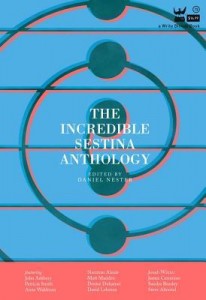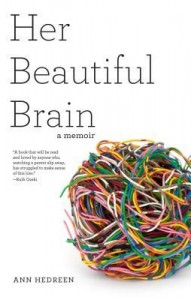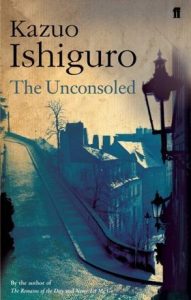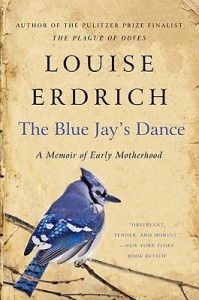 I have a confession to make. I’m only halfway through The Incredible Sestina Anthology so I really shouldn’t be reviewing it here yet, but my brain is so wrapped up in the book and the form that I wanted to share my feelings about it now both so I don’t lose the threads of what’s so exciting and so I can delve deeper into understanding the nature of that excitement. Since it’s a book of poetry, let’s bend the rules a little today, shall we? At least I know the plot won’t shift radically when I turn the next page.
I have a confession to make. I’m only halfway through The Incredible Sestina Anthology so I really shouldn’t be reviewing it here yet, but my brain is so wrapped up in the book and the form that I wanted to share my feelings about it now both so I don’t lose the threads of what’s so exciting and so I can delve deeper into understanding the nature of that excitement. Since it’s a book of poetry, let’s bend the rules a little today, shall we? At least I know the plot won’t shift radically when I turn the next page.
What’s a Sestina?
If you’re like me, you did not get much of an education in the forms of poetry in school so “sestina” aside from being a pretty word, could sound a little like gibberish. I feel that way about a lot of poetic forms—especially the ones I haven’t read many examples of yet. A sestina is based on repetition of the last words of a stanza in a particular order. There are six stanzas in which this occurs and then a final, shorter stanza where those end words are mixed up all over again. Cribbing from Daniel Nester’s intro, that form of repetition looks like this:
Stanza 1: 1 2 3 4 5 6
Stanza 2: 6 1 5 2 4 3
Stanza 3: 3 6 4 1 2 5
Stanza 4: 5 3 2 6 1 4
Stanza 5: 4 5 1 3 6 2
Stanza 6: 2 4 6 5 3 1
Envoi: 2/5 4/3 6/1
But you only really need to know the form in that kind of depth if you’re going to write one. To enjoy sestinas, it’s more essential to understand that the repetition is intentional and that there’s no other set rhyme or rhythm in the form (although most poets find their own rhythm. As with most formal poetry, the fun in being a spectator is seeing what each poet unleashes from within those walls.
Relishing Repetition
Blah blah blah stanzas, right? It’s hard to appreciate the form of a poem without getting inside it so let’s look at the first stanza of “Mother Worries” by Shane Allison:
Lord, how we gon’ pay these bills in this
How we gon’pay these bills,
Lord. How we gon’ pay these bills in
We gon’ pay these
We gon’ pay
Lord how we gon’ pay these bills in this house?
Looking at just the last words of each line, the end words that will repeat (in a different order, of course) in the next stanza are: this, bills, in, these, pay, house. Poets take a lot of leeway in how they repeat their end words and sometimes substitute the noun version for a verb or shift the tense of a word or use a homonym. The lines can be short or long.
What I love about Allison’s piece is that the entire poem is really built on the repetition of the line “How we gon’ pay these bills?” It takes many many forms, but if I counted how many different words he uses in this poem, I wouldn’t guess it’s more than 30, which, in a 39 line poem, is not a lot of words. This total repetition (and the subject matter) lends the most gorgeous lament to this poem.
Variations on a Form
There are poems by sestina purists in this book (Like Ashbery, Auden, and Bishop), and that’s all well and good, but where I started to learn most about the form (and what can be done with language) is from poets like Geoff Bouvier and Casey Camp who redefined the form for themselves. Bouvier’s “Refining Sestina” condenses the entire stanza structure down into six lines where the end words are instead repeated inside the lines. And Camp turns his poem into a graphic sestina where each line of the poem gets its own illustration.
Others, like Denise Duhamel, use a double sestina form where they’re playing with twelve end words. This means they get thirteen stanzas in which to explore their topic. I found, because I’m not the best reader, that I actually lost the end words in these longer sestinas and would sometimes be surprised halfway through with thoughts like “Have I really already read the word ‘seesaw’ six times? How did that fit in.”
There’s also an incredible variation in subject matter in this book. Some poets take their work so seriously as to write ars poeticas – sestinas about writing sestinas. And some, including writers I have admired in other contexts like Steve Almond and Jenny Boully, are obviously playing as they are writing about Elton John and the missed connections part of the newspaper (respectively).
Your Brain on Sestinas
I read about thirty pages of sestinas last night (approximately fifteen separate poems) and another seventy pages this morning. What I can tell you is that those end words, which sometimes feel very random, become embedded in your mind. They suddenly feel very important. And, if you read them before bed, you might compose dreams that pull together all that randomness. It’s a wonderful exercise to shake up those sleeping hours.
In general, reading sestinas is making me pay more attention to the ways language can be worked and how very much can be accomplished within the constraints of form. I suppose that’s why poets across the ages have continued to write in particular forms (at least some of the time).
I don’t know if I’ll be writing a sestina in the near future. But I am carefully thinking about the way I use repetition and enjoying the possibility of writing in a new form. Because The Incredible Sestina Anthology is arranged alphabetically, I’m looking forward to seeing how the rest of the poets can surprise me and stretch my thinking.
I’d love to hear about your investigations into form and repetition. Please tell me more about your projects or what you’re reading in the comments.
If this review made you want to read sestinas, pick up a copy of The Incredible Sestina Anthology from Powell’s Books. Your purchase keeps indie booksellers in business and I receive a commission.

 Alzheimer’s is in the news again this week with the death of beloved novelist Terry Pratchett. I say again, but it seems as though Alzheimer’s is never really out of the news. And while my own life has (thankfully) not been touched by this terrible disease, reading Her Beautiful Brain, a memoir of a daughter’s struggle with her mother’s early onset Alzheimer’s by my friend Ann Hedreen, I see how personal and how consuming the disease is both for those who are suffering from it and for each and every one of their family members.
Alzheimer’s is in the news again this week with the death of beloved novelist Terry Pratchett. I say again, but it seems as though Alzheimer’s is never really out of the news. And while my own life has (thankfully) not been touched by this terrible disease, reading Her Beautiful Brain, a memoir of a daughter’s struggle with her mother’s early onset Alzheimer’s by my friend Ann Hedreen, I see how personal and how consuming the disease is both for those who are suffering from it and for each and every one of their family members. I started reading The Unconsoled by Kazuo Ishiguro because it’s one of those really thick hardbacks that’s been sitting on my to-read shelf forever, I love Ishiguro, and I’m trying to read through that shelf in the five months before this room becomes a nursery and all the books have to be moved to their new home. What I didn’t realize is how much the book would blow my mind or that I was reading it at exactly the right time.
I started reading The Unconsoled by Kazuo Ishiguro because it’s one of those really thick hardbacks that’s been sitting on my to-read shelf forever, I love Ishiguro, and I’m trying to read through that shelf in the five months before this room becomes a nursery and all the books have to be moved to their new home. What I didn’t realize is how much the book would blow my mind or that I was reading it at exactly the right time. Pregnancy is a weird time. My body is changing radically but only incrementally. I can’t bear to be out of sight of my husband. The world is full of advice and stories of their own experiences (which I need but is mostly misplaced). I’m full of worries that seem ridiculous but mean everything—if I can’t feel the baby moving is it okay? will I ever write again? And I’m too tired, mostly, to read properly and too tired to do anything but read.
Pregnancy is a weird time. My body is changing radically but only incrementally. I can’t bear to be out of sight of my husband. The world is full of advice and stories of their own experiences (which I need but is mostly misplaced). I’m full of worries that seem ridiculous but mean everything—if I can’t feel the baby moving is it okay? will I ever write again? And I’m too tired, mostly, to read properly and too tired to do anything but read.